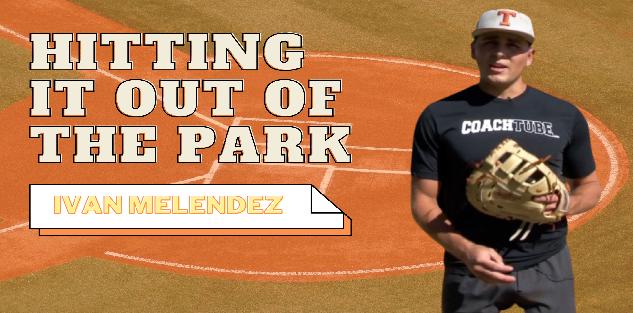Featured courses
- Understanding The Shift by Brandon Ogle
- Two Drills to Improve Outfield Movement and Communication by Grant Young
- The Ultimate Resource For Coaching Youth Baseball by Jackson Chlebowy
- Become a Master at Bunting by Brandon Ogle
- 5 Reasons Why There Is More To Good Base Running Than Just Speed by Brandon Ogle
- Three Injury-Prevention Tips For Your Offseason Pitching Program by Grant Young
- How to Teach Hitting to the Next Generation by Grant Young
- Developing Defensive-Minded Baseball Catchers by Grant Young
- 3 Baserunning Tips to Score More Runs in Baseball by Grant Young
- 5 Outfield Drills to Work on in Season by Alec Burris
- Keys For Scoring More With Runners on First and Third Base by Grant Young
- How to Develop Your Game to Become a Five-Tool Player by Brandon Ogle
- 3 Coaches Share the Keys to Running Baseball Practice the Right Way by Grant Young
- Four Drills to Sharpen a Baseball Hitter’s Vision at the Plate by Grant Young
- Four Quotes to Hit Better With Two-Strikes by Grant Young
- Four of Former MLB Pitcher Juan Nieves’ Movement-Based Pitching Drills by Grant Young
- Two Tips For Developing an Elite Baseball Bullpen by Grant Young
- Overcoming the Four Challenges of Indoor Baseball Practices Because of Weather by Grant Young
- Three Tips to Make Your Baseball Team Mentally Tougher by Grant Young
- Three Priceless Philosophies to Motivate Your Baseball Team by Grant Young
- Three Offseason Baseball Drills to Simulate Competition by Grant Young
- Three Baseball Offseason Strength and Conditioning Essentials by Grant Young
- Important Ways to Improve Your Baseball Team’s Baserunning by Grant Young
- Three Ways to Perfect Hitting Mechanics From an MLB Icon by Grant Young
- Catchers can influence pitchers...for bad or good by Drew Johnson
- Throwing Strikes and Playing Good Defense Equals Wins by Jose Ortiz
- Legendary Indiana Head Baseball Coach Bob Morgan’s Offensive Theory by Grant Young
- Tennessee Head Baseball Coach Tony Vitello on How to Practice Baserunning by Grant Young
- Three Great T-Ball Drills For Youth Baseball Players by Grant Young
- How to Manage a Baseball Pitching Staff by Grant Young
- Three Uncommon Tips to Become a Better Hitter by Grant Young
- How a Baseball Coach Can Develop Strike Throwers by Grant Young
- Drills to Develop Elite Baseball Outfielders by Grant Young
- Baseball Training Exercises to Strengthen Arm and Bat Speed by Grant Young
- How to Use Bunting to Score More Runs by Grant Young
- How To Build An Elite Baseball Infielder by Grant Young
- Three Drills to Improve Your Baseball Team's Infield Play by Grant Young
- Three Keys to Curating a Pitching Staff’s Success by Grant Young
- 3 Techniques to Develop a Baseball Player’s Hitting Approach by Grant Young
- How to Cultivate Confidence Within Your Pitchers by Grant Young
- 5 Every Day Drills To Help You Become A Better Catcher by tyler Linderman
- How to Throw A Curveball by Brandon Ogle
- How to Assemble a Lock-Down Bullpen by Brandon Ogle
- How to Throw a Sinker by Brandon Ogle
- How to be a Smart Baserunner by Brandon Ogle
- Improving a player's slugging average by Phillip Woolgar
- The 8 Fundamentals of Pitching by Drew Johnson
- How to Throw a Deceiving Changeup by Brandon Ogle
- Step Up Your Outfield Defense With These Three Drills by Jose Ortiz
- 8 Baseball Drills Every Player Should Practice by Drew Johnson
- How To Become An Elite Defensive Outfielder by Tyler Linderman
- 5 Tips For Crushing A Curveball by Johnny Grassi
- LEGENDS FOR YOUTH INCLUSION BASEBALL CLINIC by Phil
- Fourteen Ways To Turn A .300 Hitter Into A .210 Hitter by Jay P. Granat, Ph.D.
- How To Become The Ideal Leadoff Man by Brandon Ogle

Throwing Strikes and Playing Good Defense Equals Wins
- By Jose Ortiz
Winning consistently in youth sports, particularly in baseball, is more about learning how not to lose, as opposed to learning how to win. Sure, you can focus on hitting line drives, stealing bases, effective bunting or any number of other things, but more often than not, wins and losses will come down to throwing strikes and playing good defense.
At all levels of baseball – even college and professional – far more games are lost than are won.
This means that teams usually do more to cause their own losses than the opposition does to win them.
Throwing Strikes
It seems simple enough, but so many pitchers and coaches focus more on improving velocity than improving location. What good is an 80 MPH fastball that’s always out of the strike zone? You’re better off throwing 40 MPH and consistently locating for strikes.
Before worrying about how fast a player throws or how much hook his curveball has, worry about them getting complete command of the strike zone. This means a pitcher can locate his pitch anywhere within the four quadrants of the strike zone at any time. For younger-level pitchers, this requires that they dial back the velocity a bit. Pitchers are better off focusing on command with a moderate fastball than trying to throw the heat.
Your average youth and high school baseball lineup isn’t stacked with sluggers who can make you pay dearly for leaving a meatball over the plate. In most situations, the worst that will happen is a base hit.
But the nature of baseball (.300 hitter is Hall of Fame material) dictates that even the slowest pitch will generally result in an out. When pitchers realize this and learn to trust their defense, they will find they have a lot more success, without the need for a blazing fastball or deceptive curve.
Remember that pitches off the plate lead to walks, which almost always come around to score. Make players earn their way on base by consistently throwing strikes.
Play Good Defense
One of the worst things you can do in baseball is give a team extra outs through bad defense. Each team is supposed to have three outs per inning – when defensive errors are made, the team is essentially given an extra out to put more runs on the board. It doesn’t take a baseball genius to realize that this eventually leads to crooked numbers on the board against you.
A defensive error not only gives the other team an extra life, it also demoralizes the pitcher and everyone else on the defense. You were about to get out of an inning and get back in the dugout to bat when a routine grounder rolled through the shortstop’s legs. Now, you have to work to get another out, naturally leading to a mental let down. It also invigorates the other team, which now has another chance to do some damage.
Conversely, a great defensive play excites your team and your pitcher. You were about to give up a run or an extra base hit until the centerfielder made a diving catch to get you out of the inning. Now, instead of having runners on base, you’re back in the dugout getting ready to put some runs on the board. On the other hand, robbing a team of surefire runs is a great way to kill the opposition’s spirit.
At worst, you want to have a baseball team that makes all of the routine plays and some of the great ones.
Watch Coach Bob Morgan go over some of his favorite infield drills to improve defense.
Source: Infield Play: Drills & Techniques For Infielders
Minimize Mistakes to Maximize Wins
In all sports, mistakes are killers. Whether it’s turnovers in football or basketball, faults in tennis or errors and walks in baseball – the more chances you give another team to beat you, the more likely they will take advantage.



